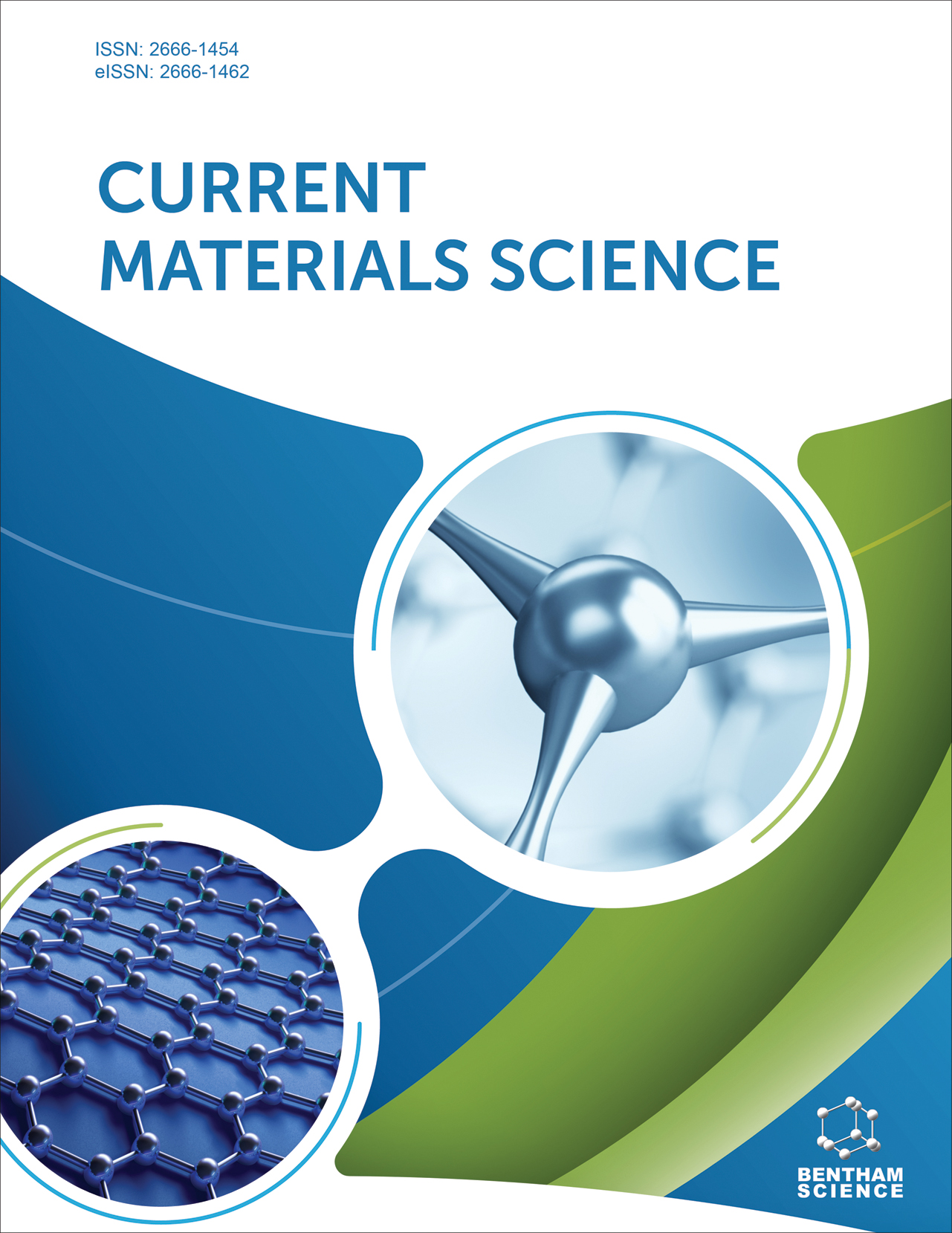- Home
- A-Z Publications
- Current Materials Science
- Previous Issues
- Volume 14, Issue 2, 2021
Current Materials Science - Volume 14, Issue 2, 2021
Volume 14, Issue 2, 2021
-
-
Feasibility of Bentonite as an Internal Curing Agent in Concrete
More LessBackground: There is a requirement for internal curing, especially in areas where water is scarce and where it is difficult to cure concrete due to inaccessibility of the site. About five times higher water is consumed in curing than the water used in making concrete. Furthermore, the quality of water that is to be used for these activities is required to be of a certain standard. If the requirement of water can be reduced, it becom Read More
-
-
-
Evaluation of Strength of Concrete on the Different Initial Exposure Con-ditions
More LessAuthors: Sri R. K. Mishra, Pradeep K. Ghosh and Manoj KulshreshthaBackground: The previous studies have focused curing effect of mainly on high strength concrete, where strict supervision is maintained. This study is based upon general purpose concreting work for commercial and residential construction in absence of skilled manpower and supervision. Objective: The objective of this study is to establish a thumb rule to provide 7 days initial curing for maintaining quality for unsupervised Read More
-
-
-
Role of Dysprosium in In2-xDyxO3 to Enhance White Light Emission in OLED
More LessAuthors: Om P. Verma, N. Kumar Swamy, Anup Kumar Mishra and Mekh Ram MeshramBackground: OLED material is always having much science to explore in them. The role of rare earth Dy as a dopant material in well studied In2O3 is studied. Objective: The candidature of the white light emission from the Organic light emitting diode is explored in the present work. Methods: The doping concentration effect and the corresponding emission is shown in the present work. It is emphasized that the doping at nearly Read More
-
-
-
Advances in Carbidic Austempered Ductile Iron (CADI) - A Wearresistant Material
More LessAuthors: Lakshmiprasad Maddi and Ajay LikhiteBackground: Ductile irons provide a more viable alternative for malleable cast iron in areas that do not demand extreme wear resistance. Austempering of ductile irons was a well researched area in the last two decades. Attempts to further improve the wear resistance led to the development of Carbidic austempered ductile iron (CADI), wherein the carbides contribute to wear resistance. Combination of ausferriti Read More
-
-
-
Corrosion Studies Using the Scanning Vibrating Electrode Technique (SVET) - A Brief Review
More LessBy Amir HussainBackground: The Scanning Vibrating Electrode Technique is an important method in the field of corrosion. The technique has helped researchers to understand corrosion mechanisms in real time, due to the availability of commercial systems, which are user-friendly, having a high degree of sensitivity and reliability. The technique provides quantitative and qualitative measurements by utilising a vibrating probe at a fixed heig Read More
-
-
-
Mechanical Performance of the Phosphogypsum Baking-free Bricks
More LessAuthors: Xiaoyu Guo, Yajing Mao, Lizhai Pei and Chuangang FanBackground: A large amount of phosphogypsum occupies the land and causes environmental pollution. It is of great research significance and urgency to the utilization of the phosphogypsum. Methods: The influence of the ratio of the cementing materials and phosphogypsum (C/P ratio) on the compressive strength, water absorption, softening coefficient and freeze-thaw stability of the phosphogypsum baking-free bricks wa Read More
-
-
-
Effect of Visual Cognition on the Measurement of Particle Size Using ImageJ Software
More LessAuthors: Alexis Debut, Karla Vizuete, Katherine Pazmiño, Janyna Calderón, Camila Gallegos and Vanessa GaonaBackground: Nanoparticles are structures up to 100 nm in size. Estimation of their size is usually determined by assessing of images obtained from scanning electron microscopy (SEM) and/or transmission electron microscopy (TEM) techniques. Studies on the effect of visual cognition on the analysis of these types of images are limited. Objective: The aim of the research was to determine whether students’ visual cognition inf Read More
-
-
-
Theoretical Study of the Effect of Thermal Stress on Transversal Damage of Hybrid Biocomposite Materials Flax-hemp/Polyethylene
More LessAuthors: Allel Mokaddem, Bendouma Doumi, Mohammed Belkheir, Ahmed Boutaous and Elhouari TemimiBackground: The objective of sustainable development in the field of materials necessitates and demands the substitution of the basic constituents of a composite material (carbon, glass, etc.) by natural reinforcements, which have a very important role in the protection of the environment and to subsequently have new materials with good properties compared to socalled traditional materials. Objective: In this context, we have Read More
-
-
-
Thread Type and Stitch Density Suitable for Seams in Ghanaian Public Basic School Uniforms
More LessAuthors: Patience D. Monnie, Docea Fianu and Efua VandyckBackground: The serviceability of a sewn garment is influenced by the quality of its seams, which form the basic structural element. The factors that affect seam quality in garments include, sewing thread type and stitch density. Their right choice helps with the achievement of quality seams in garments. However, the choice of suitable sewing threads and stitch densities for particular fabrics can only be determined through t Read More
-
Most Read This Month
Article
content/journals/cms
Journal
10
5
false
en


